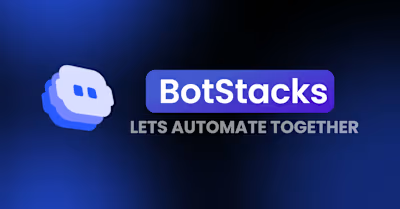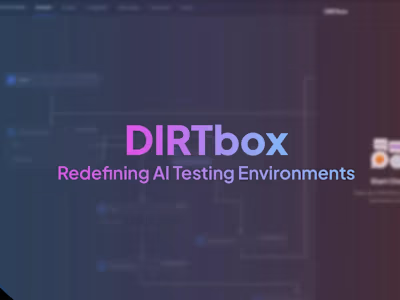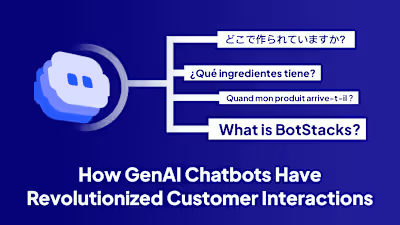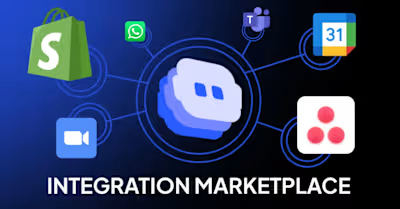Blog Article
Rules-Based vs. Generative AI for Customer Service
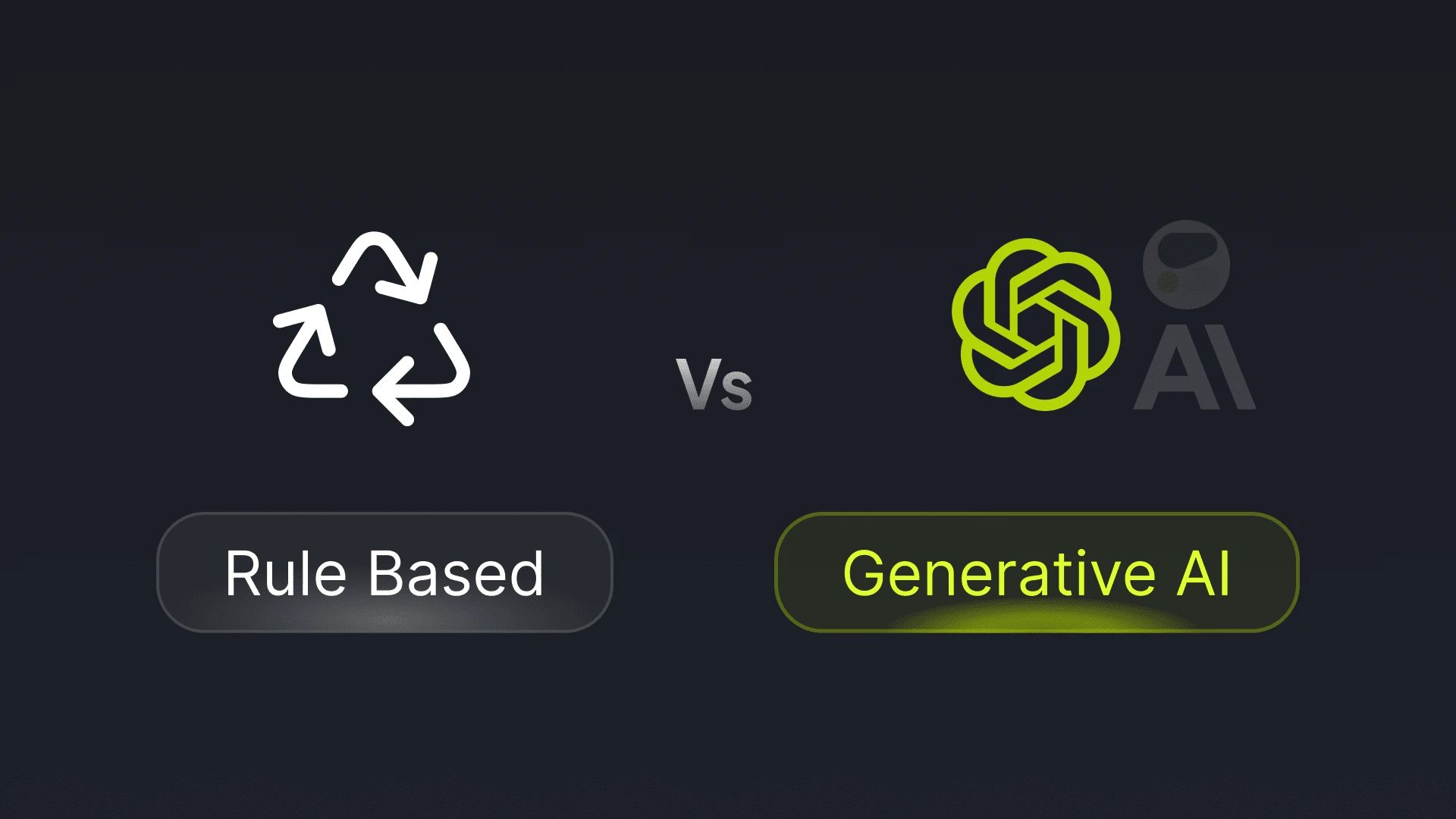
Rules-Based vs. Generative AI…Which Is Right for Your Customer Service Needs?
We’ve all found ourselves stuck in a seemingly endless loop of scripted chatbot responses.
Frustrating, right?
With the rise of AI, businesses now find themselves at a crossroads: should they stick with traditional rules-based chatbots or embrace the dynamic capabilities of Generative AI (GenAI)?
Today, we’ll answer that question as we explore how these two types of AI stack up.
Ready? Let’s go!
The Evolution of AI in Customer Service
Customer service technology has grown and improved significantly since the introduction of widely available AI just a few years ago.
As this tech continues to advance, the choice between rules-based and GenAI has become more a question of function than convenience.
Rules-Based AI: The Basics
Rules-based AI operates on predefined rules. It is suited for handling straightforward, predictable tasks, making it functional for scenarios where consistency and simplicity are key. It is cost-effective and easier to implement, serving well in environments that require repetitive, routine interactions.
While it excels in these areas, it lacks the flexibility to adapt to complex, unpredictable situations. Its functionality is limited in dynamic environments where nuanced decision-making is essential. Despite these limitations, rules-based AI remains a foundational technology that's valuable in settings where precision and reliability are required.
Let’s Dig a Little Deeper…
Rules-based chatbots are AI systems designed to follow predefined rules and "decision trees" to respond to specific user inputs. They operate within a structured framework where each possible user input is anticipated, and corresponding responses are scripted in advance. These chatbots are ideal for handling straightforward and predictable scenarios, such as answering frequently asked questions or guiding users through simple and consistent processes.
How Rules-Based Chatbots Work:
Predefined Rules: Responses are based on a set of predetermined rules created by developers. These rules can include specific keywords, phrases, or patterns that trigger particular responses.
Decision Trees: A decision tree is a flowchart-like structure where each branch represents a possible user input, and each leaf represents the chatbot's response. This helps the chatbot navigate through a series of user inputs to reach the appropriate response.
Static Responses: Since the chatbot's responses are pre-scripted, it can only handle queries that fit within its programmed rules. This makes the chatbot's interactions predictable and consistent but limited to its predefined scope.
Ideal Use Cases for Rules-Based Chatbots:
Frequently Asked Questions (FAQs): Rules-based chatbots are perfect for answering FAQs. But only when the questions are predictable, and the answers are consistent. For example, a chatbot on a retail website can provide information about specific items, return policies, shipping options, and store locations.
Guiding Users Through Simple Processes: These chatbots can guide users through straightforward processes, such as booking appointments, checking order statuses, or resetting passwords. The decision trees can map out each step of the process, ensuring users receive the assistance they're looking for.
Form Filling and Data Collection: Rules-based chatbots can assist users in filling out forms by asking for information step-by-step, ensuring that all required fields are completed correctly. This is particularly useful in customer service scenarios where structured data collection is necessary.
Advantages of Rules-Based Chatbots:
Predictability: Users receive consistent and predictable responses, which can enhance trust and reliability in customer service interactions.
Cost-Effective: Development and maintenance costs are relatively low compared to more advanced AI systems. The simplicity of rules-based chatbots makes them ideal for businesses with relatively simple needs.
Quick Implementation: These chatbots can be quickly deployed and updated. That's because changes to rules and decision trees are straightforward to implement.
Limitations of Rules-Based Chatbots:
Limited Conversational Abilities: Rules-based chatbots struggle with complex or unexpected queries that fall outside of their predefined rules. This can lead to user frustration if the chatbot can't understand or respond appropriately to user requests.
Manual Updates Required: Updates allowing the chatbot to handle new types of queries or changes in business processes must be implemented manually. This can be time-consuming and may not keep up with rapidly changing customer needs.
Lack of Personalization: Rules-based chatbots provide generic responses and cannot tailor interactions based on individual user preferences or past interactions.
While rules-based chatbots are effective for handling simple, repetitive tasks and providing consistent customer service, they are limited in their ability to handle more complex, dynamic interactions.
Rules-based chatbots are great for handling predictable scenarios, but they often fall short when dealing with more complex interactions. This is where GenAI steps in.
GenAI: The Basics
GenAI represents a significant leap forward in customer service.
Generative AI is designed to handle complex, nuanced interactions by utilizing machine learning algorithms. These systems can adapt and respond contextually, making them ideal for dynamic and variable customer service needs.
GenAI can continuously learn and improve, offering advanced conversational capabilities that go beyond the static responses of rules-based systems.
Unlike rules-based chatbots that rely on predefined scripts and decision trees, generative AI models, such as GPT-4o, are designed to understand and generate human-like responses based on the greater context of user inputs. This adaptability makes them ideal for dynamic customer service needs that change and fluctuate constantly.
How Generative AI Works:
Contextual Understanding: Generative AI uses large language models (LLMs) trained on vast datasets to understand the context of user inputs. This allows the AI to generate responses that are relevant to the specific situation, rather than relying on static, pre-scripted answers.
Machine Learning Algorithms: These AI models employ sophisticated algorithms that learn from patterns in the data they process. This continuous learning enables the AI to improve its performance over time, adapting to new types of queries and evolving customer needs.
Natural Language Processing (NLP): NLP techniques allow generative AI to comprehend and produce text that closely mimics human language. This ability is crucial for maintaining engaging and effective conversations with users.
Advantages of Generative AI in Customer Service:
Advanced Conversational Abilities: Generative AI can engage in more fluid and dynamic conversations. These systems can understand nuances, and subtleties in language. This leads to more natural and satisfying interactions for users.
Continuous Improvement: The AI learns from each interaction, continuously refining its responses and expanding its knowledge base. This means that the more it is used, the better it becomes at handling a wide range of inquiries (Yellow.ai).
Handling Complexity: Generative AI excels at managing complex queries that rules-based chatbots cannot. It can provide detailed, context-aware responses and handle multiple layers of questioning, making it suitable for diverse customer service scenarios.
Ideal Use Cases for Generative AI:
Enhanced Customer Support: GenAI can provide better support by understanding and addressing complex customer issues. This reduces the need for human intervention and dramatically improves response times.
Automated Knowledge Management: By integrating a company’s knowledge base, generative AI can fetch accurate and contextually relevant information, minimizing the risk of incorrect responses and hallucinations. This integration enhances the reliability and effectiveness of the AI.
Personalized Interactions: GenAI can analyze past interactions and customer data to tailor responses to the individual user on a case-by-case basis. This is a level of personalized experience that rules-based systems cannot match. This personalization can significantly improve customer satisfaction, brand loyalty, and brand love.
Mitigating Hallucinations in Generative AI.
Hallucinations are when AI generates responses that are inaccurate or unrelated to the user request. They can be a real concern with GenAI when accuracy is essential.
But there’s good news.
This issue can be mitigated by incorporating your own knowledge base.
BotStacks allows businesses to add their proprietary knowledge bases within GenAI models. This guarantees the AI creates its responses from verified, company-specific information, reducing the likelihood of hallucinated responses and enhancing the overall quality of customer interactions. For more on AI Hallucinations, check out this blog post.
Ensuring Accuracy and Reliability
By leveraging BotStacks' unique ability to integrate proprietary knowledge bases, businesses can maintain the accuracy and reliability of their generative AI solutions. This feature guarantees that the AI provides contextually relevant and accurate information. This safeguard can significantly enhance customer trust and satisfaction, leading to better retention, higher conversion rates, and increased revenue.
Wrapping Up
Generative AI brings a new level of sophistication to your customer service game. It's like having a supercharged, perpetually caffeinated assistant who's ready to handle user queries 24/7.
With advanced conversational skills, continuous learning, and the ability to manage complex interactions with ease, generative AI can significantly improve your customer support operations. Compared to traditional rules-based chatbots, GenAI offers a much more dynamic and personalized experience for your customers and users.
As customer expectations continue to get higher and business requirements continue to evolve, the functionality provided by GenAI—like personalized interactions, better handling of complex queries, and continuous learning—becomes critical. This shift reflects a deeper integration of AI into business processes. Today, the functional benefits of generative AI often outweigh the convenience and simplicity of rules-based systems.
Again, it has become more a question of function than convenience. While rules-based chatbots are great for simple tasks, GenAI offers a more sophisticated and adaptable solution for modern customer service needs.
At BotStacks, our generative AI solutions integrate easily with your existing customer service platforms, offering advanced conversational capabilities tailored to the specific needs of your business.
By leveraging BotStacks' innovative AI technology, your business can take its customer support to the next level, providing a dynamic and personalized experience that will "Wow" your customer and users.
Ready to transform your customer service game?
Discover how BotStacks can help you stay ahead of the curve.
Like this project
Posted Sep 13, 2024
Discover the key differences between rules-based and generative AI for customer service. Learn how GenAI's advanced capabilities can transform customer interac…




